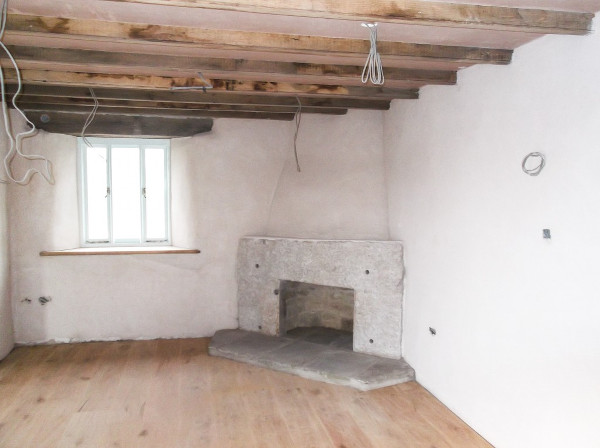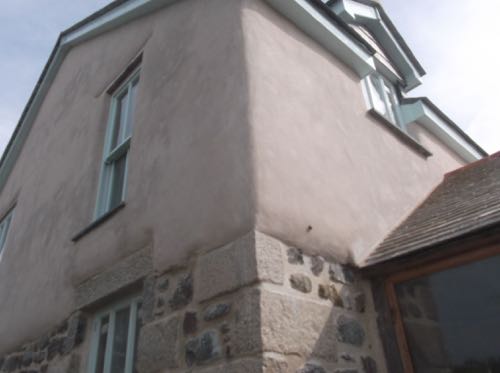Lime Plastering Cornwall
The use of lime as a binding medium for plasters and mortar can be traced back at least 8,000 years, and lime was in common use for building in Cornwall up until the end of the First World War. This near-universal application means that, for any structure prior to 1920 – whether lowly rural cottage, townhouse or country manor – it is safe to assume all original mortar, plastering and rendering would have been lime-based.
With traditional Cornish properties, the characteristic breathability of their walls also helped combat the often-damp climate with its regular occurrence of wind-driven rain. In this context, the essence of the protection provided by the use of lime-based materials is their natural ability to remain waterproof and keep atmospheric moisture in balance – as with modern ‘micropore’ outdoor clothing systems, the internal structure is kept dry by the action of a flexible porous barrier which repels exterior weather whilst allowing interior moisture to vent to the exterior.
Lime-layered walls.
Applying lime plaster to walls, or as a rendering, involves building up a surface in a series of layers employing the following procedures:
– Pugging: this fills the holes and other irregularities in rough stone and cob surfaces, and is an essential first step to obtain a workable base layer.
– Scratch coat: so called because the finished surface is scored in a diamond pattern, providing a good grip for the subsequent layer. This is applied to conceal any remaining imperfections, and forms a smooth and level surface on to which the final layer of plaster can be spread.
– Top coat: the topmost layer of lime plaster which creates a smooth wall surface. When this layer has hardened to a leathery consistency, it is then finally smoothed to produce a consistent overall texture. On interior walls, a final finish is often added when the surface is dry. This can be another ultra-thin porous plaster skim, a coating of lime wash, or the application of a breathable paint.
Exterior rendering
With an exterior wall, the final coat can be smooth or else provide the base for lime dashing. This form of rendering incorporates larger aggregate pieces, and the irregular texture thus produced has the effect of increasing the surface area exposed to the weather, which in turn repels stormwater more efficiently.
Hardening and setting
The use of lime-based plasters requires an appreciation of the importance of ‘carbonation’ – a chemical process set in train when water is added to the lime, which is then exposed to atmospheric conditions. This essential curing phase determines how weatherproof and durable the surface will eventually become – in the case of exterior work, this process can be adversely affected by frost.
Reinforcement
Traditional lime plaster and rendering was often strengthened by adding animal hair, which also limited any subsequent shrinkage cracking. This painstaking process requires the coarse body hair of horses, goats or cows to be teased into the plaster during mixing, a few strands at a time. Because this operation results in a coarse-textured surface, animal hair was not usually applied to finishing coats.
In good repair, lime-based materials complement a property’s structural framework with all elements combining to keep the building weatherproof and viably functioning within its natural environment. Only when this age-old synthesis is interrupted by disrepair, or by the introduction of incompatible materials, is this holistic system compromised – permitting water to enter and/or trapping moisture within the structure.
With the repair and conservation of traditional Cornish buildings, which our company undertakes throughout the whole of Cornwall, correctly identifying the traditional techniques and materials employed by the original builders is an essential first step towards sourcing and replicating these elements. And respecting the historic integrity of a building is also the surest route to a successful restoration.



